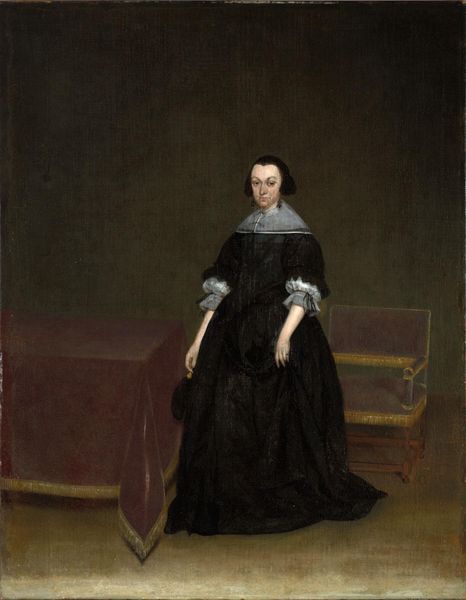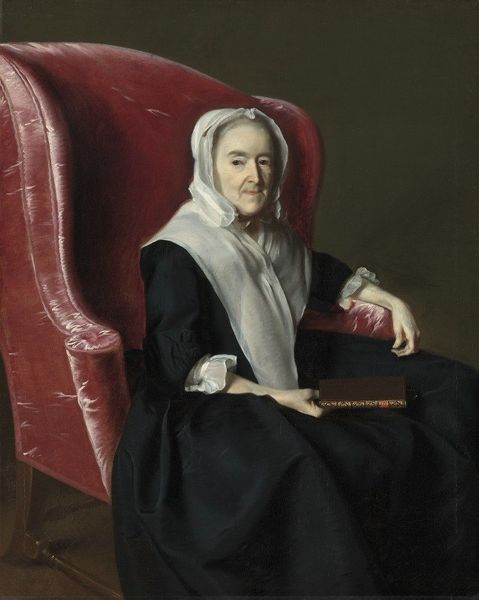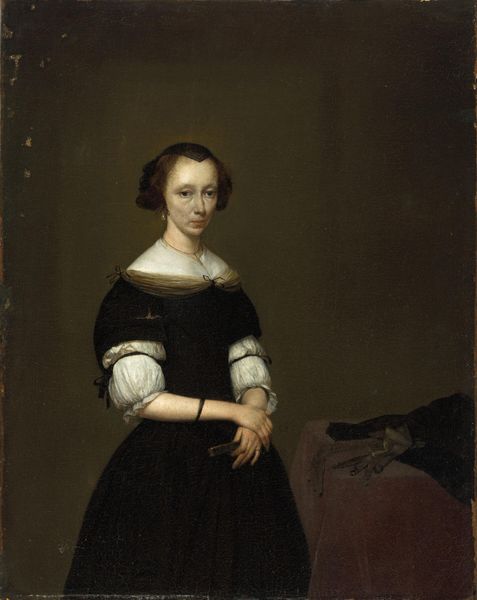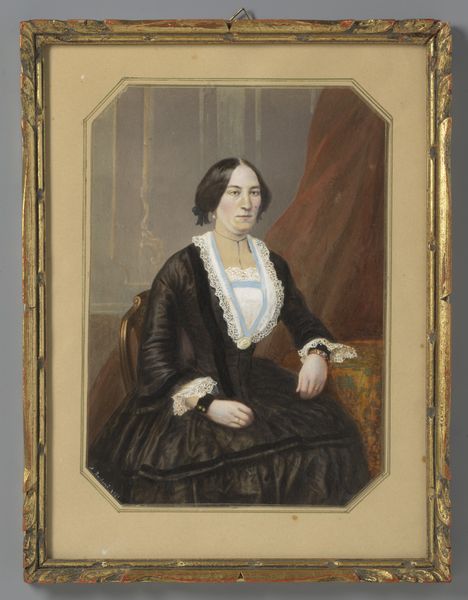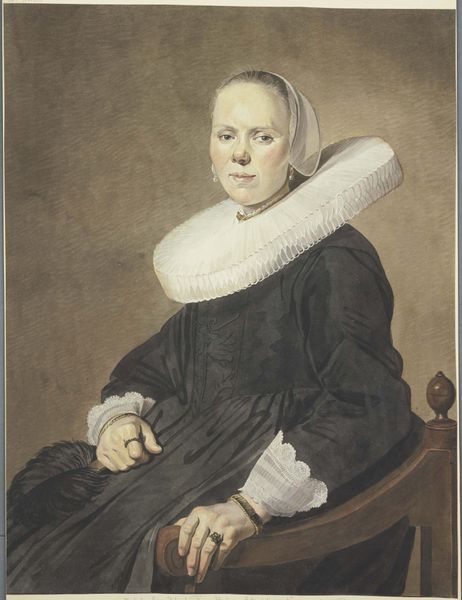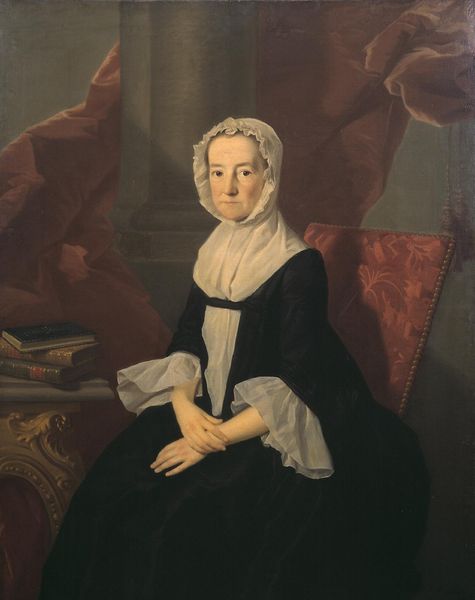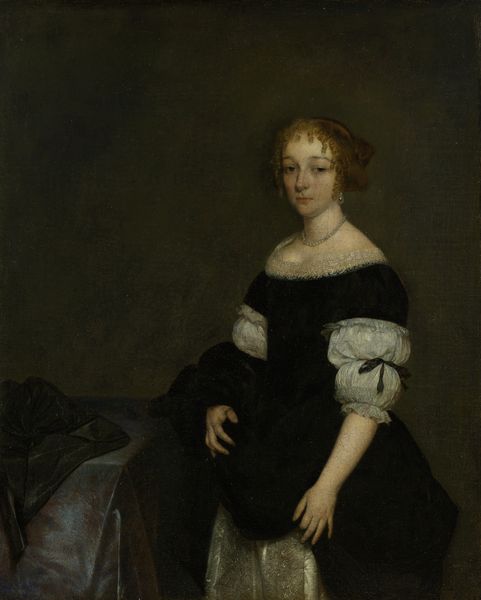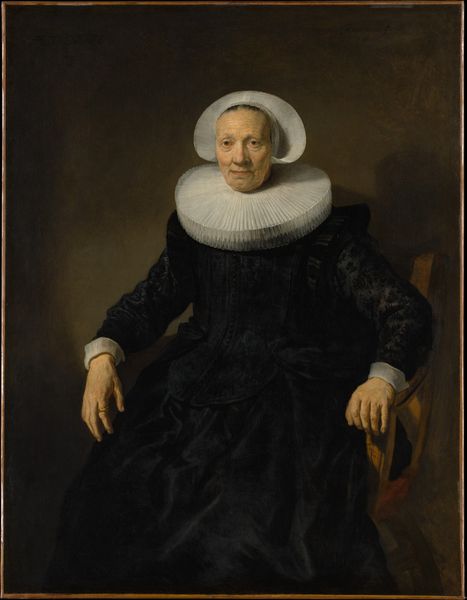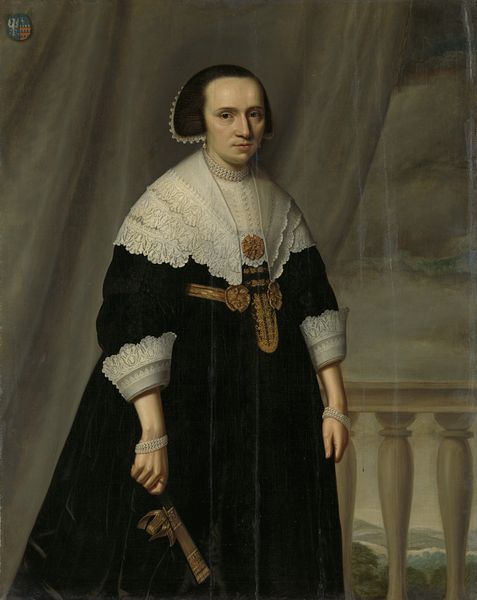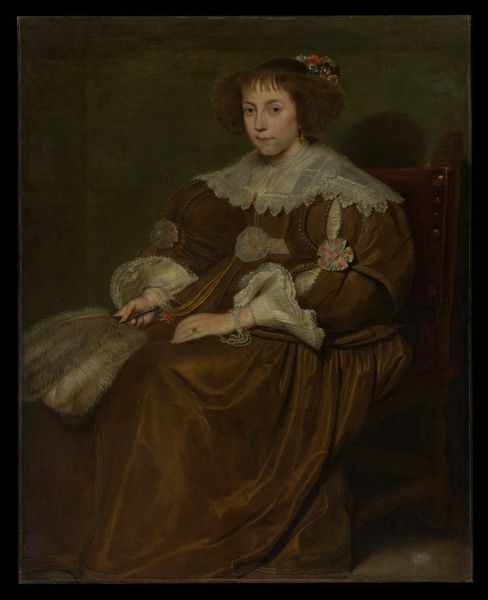
Margaretha van Haexbergen (1614–1676) 1663 - 1670
0:00
0:00
painting, oil-paint
#
portrait
#
dutch-golden-age
#
painting
#
oil-paint
#
genre-painting
#
academic-art
#
realism
Dimensions: 32 x 26 in. (81.3 x 65.1 cm)
Copyright: Public Domain
Editor: Here we have Gerard ter Borch the Younger’s portrait of Margaretha van Haexbergen, likely painted between 1663 and 1670, using oil on canvas. She seems quite stern, almost imposing, and I'm struck by the contrast between the darkness of her dress and the vivid red chair. What draws your eye in this painting? Curator: Indeed, the stark juxtaposition of hues immediately arrests our attention. Consider the painterly treatment of the fabric: the deep, lustrous black of the dress functions almost as a void, a formal device that throws the subject's face and hands into sharper relief. The adjacent chair, with its angular structure and saturated color, further articulates this visual tension. Notice, too, how the artist utilizes light – a chiaroscuro effect – to sculpt form and define space within the composition. How does this calculated contrast affect your interpretation of the subject's persona? Editor: I hadn’t really considered it in that structural way. It makes me think of her as a deliberate construct, rather than just a representation of a person. It’s interesting how the contrast seems to create distance, almost like she is shielding herself from view. Curator: Precisely. One might further analyse the geometrical construction. Ter Borch deploys horizontal and vertical planes to solidify a sense of order and balance. The sitter, positioned just off-centre, occupies a defined spatial envelope, which intimates something of her place and status in society. Editor: So it’s not just about what’s depicted, but how the artist arranges it that creates meaning. I guess I was so focused on her face I missed a lot of that. Thanks for pointing it out. Curator: And thank you. Analyzing the interplay between structure, colour, and light, as you rightly noticed, allows us to interpret this portrait's composition in terms of constructed social and personal meanings.
Comments
No comments
Be the first to comment and join the conversation on the ultimate creative platform.
